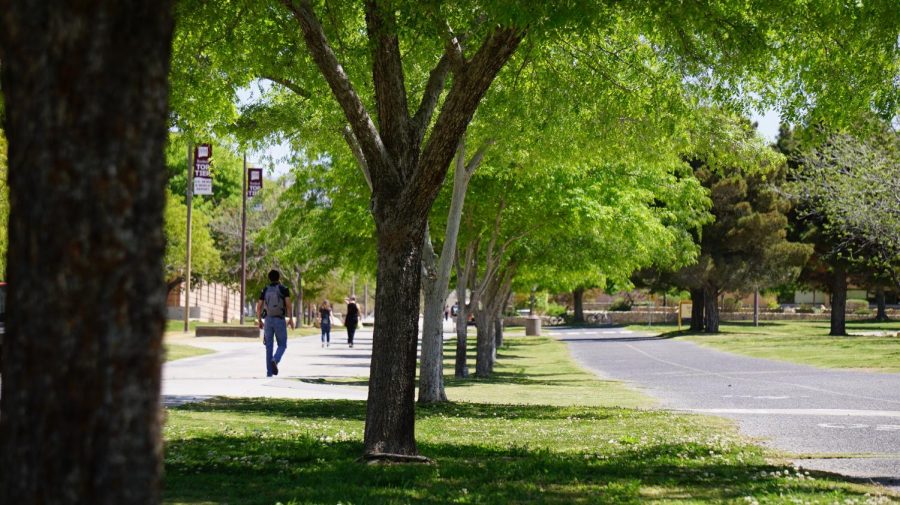Aggressive birds return to NMSU campus

More stories from Aimee Ryan
Students should beware of the return of Swainson’s Hawks to campus.
With the arrival of spring, the feared Swainson’s hawks are expected to make their return to New Mexico State University. In recent years, many students have been reportedly attacked by hawks around the area where Rentfrow Hall on Stewart street is located.
Various signs and flyers are posted around campus to remind students to be aware of their surroundings. Certain areas where hawks typically nest have increased instances where students walking in the danger zones have encounters with the hawks.
When NMSU junior Victoria Arvizu was a freshman, she recalls the two encounters she had with the Swainson’s hawks on campus.
“I was walking in the parking lot by Rentfrow, and I heard the hawks like I had many times before. Within a minute or two I heard a relatively loud swoosh sound then felt the claws graze my head.” Arvizu said. “I wasn’t cut or anything, but it was definitely frightening. This happened on two occasions within the same parking lot.”
NMSU campus is a suitable place for the birds to call their home during the spring and summers, Department Head of geology Carol Campbell said.
“We have amazing habitat here. Swainson’s hawks are an aerial predator—that means they like to catch prey on the wing. I have seen a few young white-winged doves become prey for the hawks. There are also many small squirrels and bunnies around the track, and the lights over the intermural fields attract large grasshoppers and moths,” Campbell said.
Swainson’s hawks mate for life and return from 7,000 miles worth of travel from South American countries like Argentina to North America. When the hawks are here at NMSU, they are caring for their fledglings—baby birds that are preparing to leave their nest.
Swainson’s hawks inhabit a 2.5-mile radius on campus and will swoop in front of or at people if they sense that there is a threat to their young.
When nestlings are preparing to fledge, Campbell said it is wise to stay away from their area, but if that is not possible, she said students should carry an umbrella and be sure that there are not any young on the ground or on nearby fences, poles or light fixtures.
Retired NMSU business professor David Boje spent much of his time informing students on how to protect themselves from the hawks during his time at NMSU and described how human and hawk activity have meshed together.
“We cannot detach our local campus existence from the rights of hawk life—we have to adjust. There were no problems with Hawks for a century at NMSU, and then people started walking about staring at cellphones,” Boje said. “It is not the only change. Human activities began eliminating wild spaces, adding more buildings, roads, pavement, sidewalks, and so on to the campus.”
In addition to carrying an umbrella, Boje would recommend wearing a hat. Students should be aware of their surroundings and listen out for hawks’ call.

Aimee Ryan is a senior and Southern New Mexico native entering her fourth year at The Round Up and her first year as an editor. She worked as a staff writer...

